Nathan Collins has just become the most expensive Irish football player of all time after earning a £20.5 million move. After breaking through into Burnley’s first team in the last season, Collins caught the eye of many Premier League clubs. His form in the 18 Premier League fixtures that he started, resembles that of Harry Maguire, the form that persuaded Manchester United to spend £80 million on the ex-Leicester City defender. Both players are similar, with a towering presence, a leader of the back line, and a tendency to carry the ball up the pitch.
Wolverhampton Wanderers have just lost Romain Saiss, a regular starter for Wolves since 2016. Nathan Collins is expected to come into the side on the back of the back 3 with Max Kilman moving over to the left side. Last season, Wolves maintained the fifth-best defensive record, with only Tottenham, Chelsea, Liverpool and Manchester City conceding fewer goals than them. This is an impressive record and Collins will be coming into a very good defensive side managed well by Bruno Lage.
This scout report and tactical analysis will display Nathan Collins attributes, style of play and what we can expect from him. This analysis will explore how he will fit into Wolves’ side and adapt to Bruno Lage’s tactics.
Style of Play
Nathan Collins is a central defender and 6 foot 3 inches tall. A man mountain in defence, Collins thrives in aerial duels thanks to his big frame and is strong in tackles. His long legs help him to take big strides while dribbling, allowing him to carry the ball up the pitch over large distances with seemingly little effort. Collins also likes to pass the ball, often looking to help retain possession even though the team he played for, Burnley, were suited for a more direct style of play.
Collins is also intelligent, and able to sniff danger and position himself in the correct place to prevent goals through both blocks and interceptions. Having only turned 21 recently, Nathan Collins has a long future ahead of him in the Premier League, and if he can build on his performances for his club, he will for sure become a regular in the Premier League with hundreds of appearances in the competition.
Defensive Ability
First and foremost, Nathan Collins is a strong defender, especially when defending on the back foot and against teams who sustain pressure. Collins has a great ability to position both his feet and his body in the optimal way to be able to close the space where the opposition can attack, and clear the ball away from the box. He is good at reading the play, and this allows him to intercept both through balls and crosses before they get to the forward players. The image below shows how he has identified that the cross is about to come in, and therefore sprints into the space where he can clear the ball away,
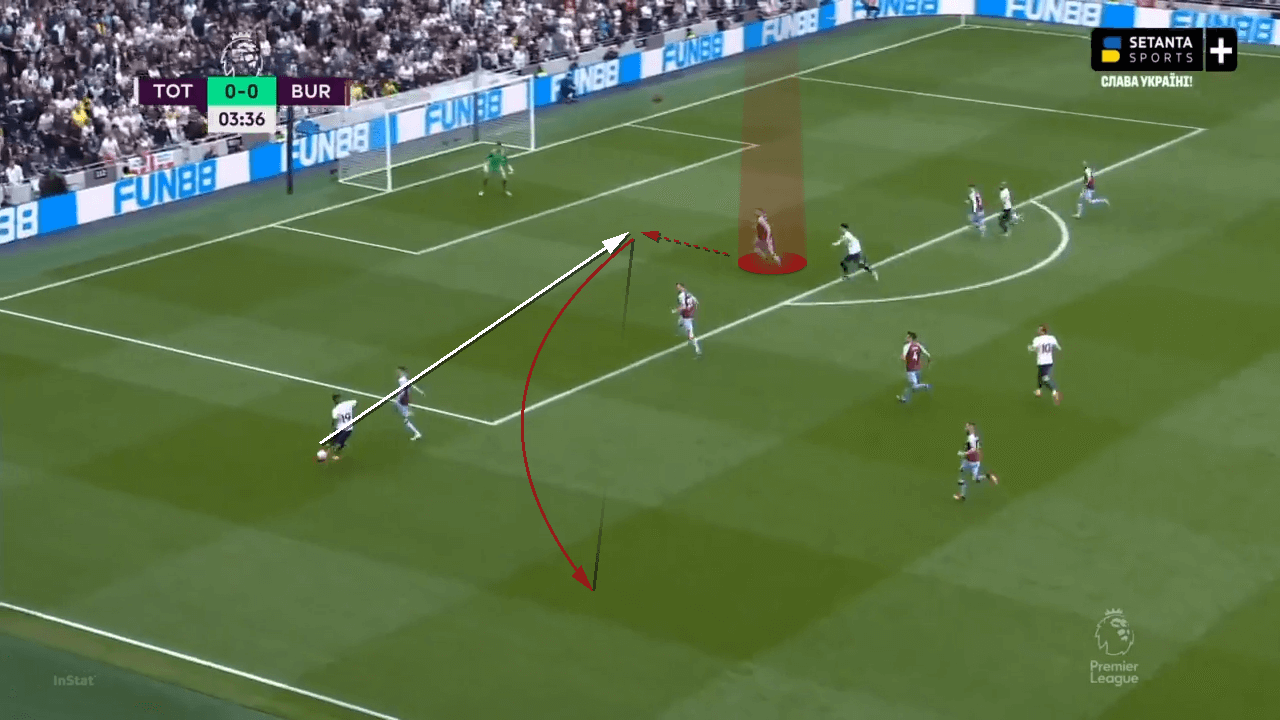
The image underneath further displays his ability to position his body in a way where he can recover to make up for the space in the six-yard box. Being able to quickly identify where the danger is allows Collins to get in a position where he can easily get rid of the ball, whilst other defenders may get caught ball watching and leaving their opponent free to attack the box.
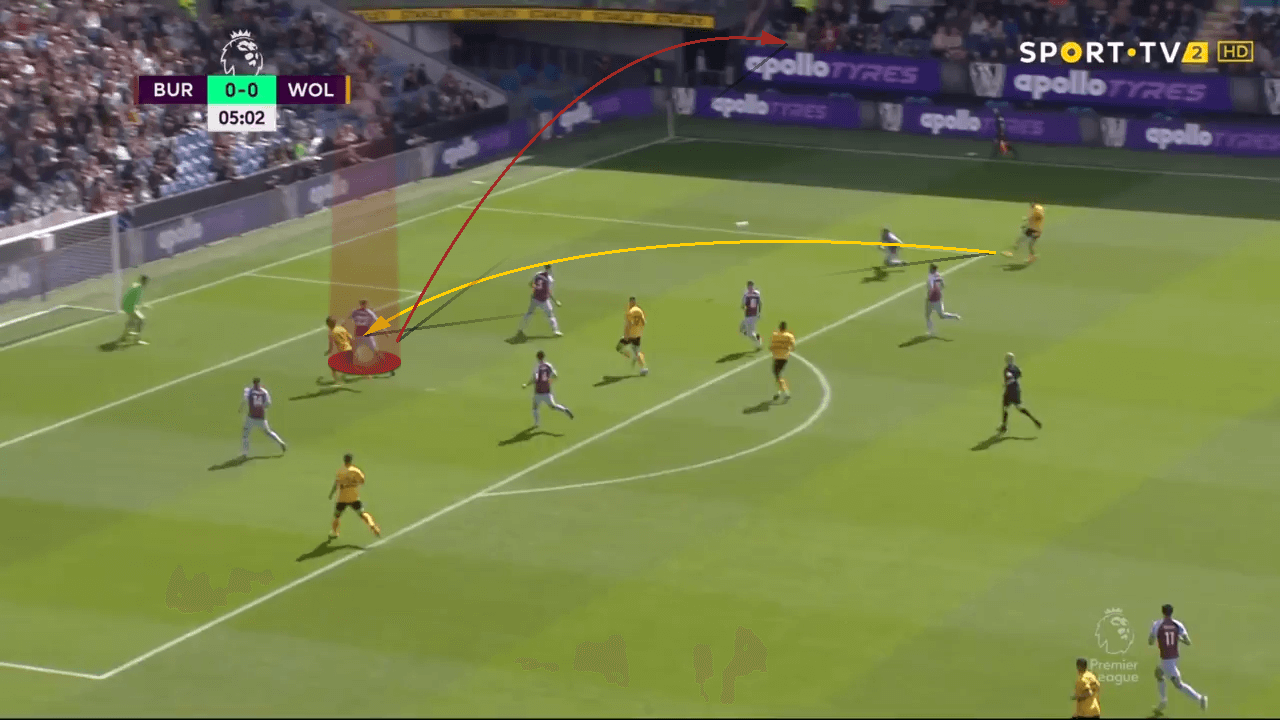
Although he is only 21 years old, Collins has regularly displayed his great reading of the game, allowing him to be in positions to prevent goals from occurring when some defenders might strictly try and mark their opponent. The image below shows a cross coming into Harry Kane, where Collins knows of his supreme heading ability and gets across to the back post to clear the ball off the line. Collins took a risk by leaving his marker, but he used his intelligence to predict where the ball may end up depending on who is heading the ball, and ended up saving Burnley from conceding a goal.
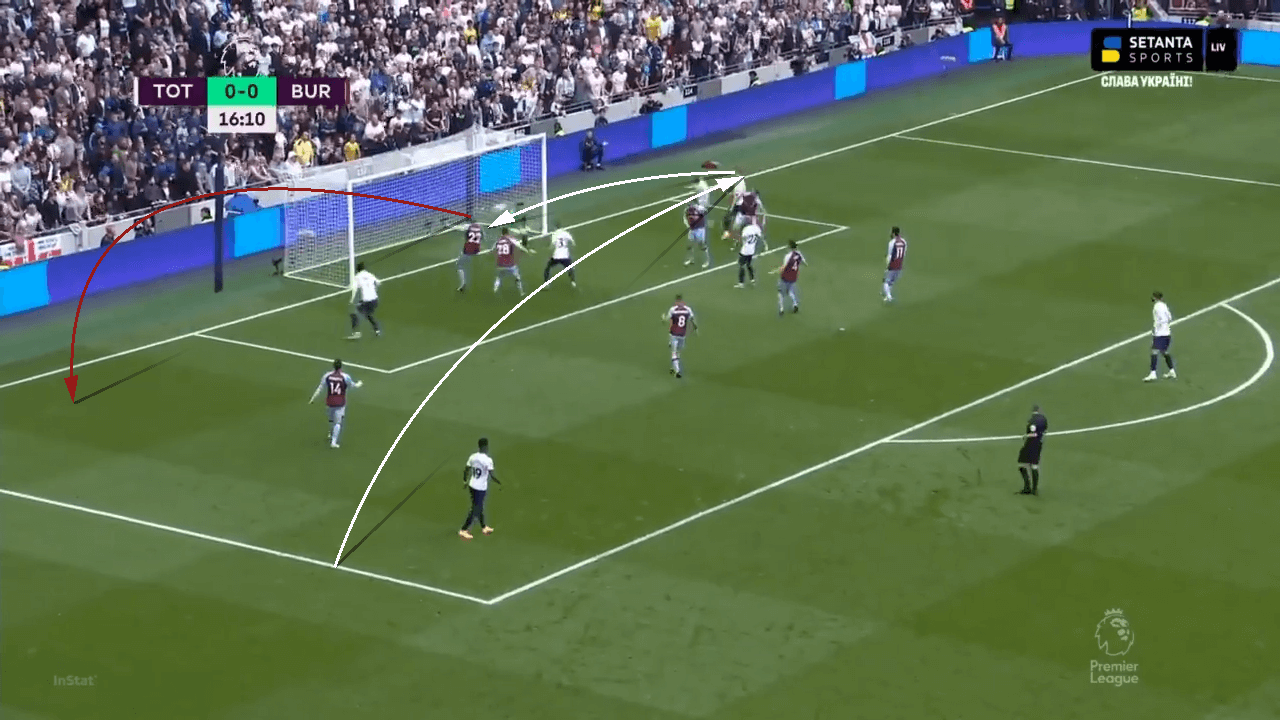
Another strength Nathan Collins possesses is his ability to make recovery challenges from behind. Collins uses his long legs and powerful stride to make sliding tackles if an opponent has the ball ahead of him. The picture below shows how the ball ended up at the feet of a Brentford player, before Collins slides from the back, and hooks his leg around his opponent clearing the danger.
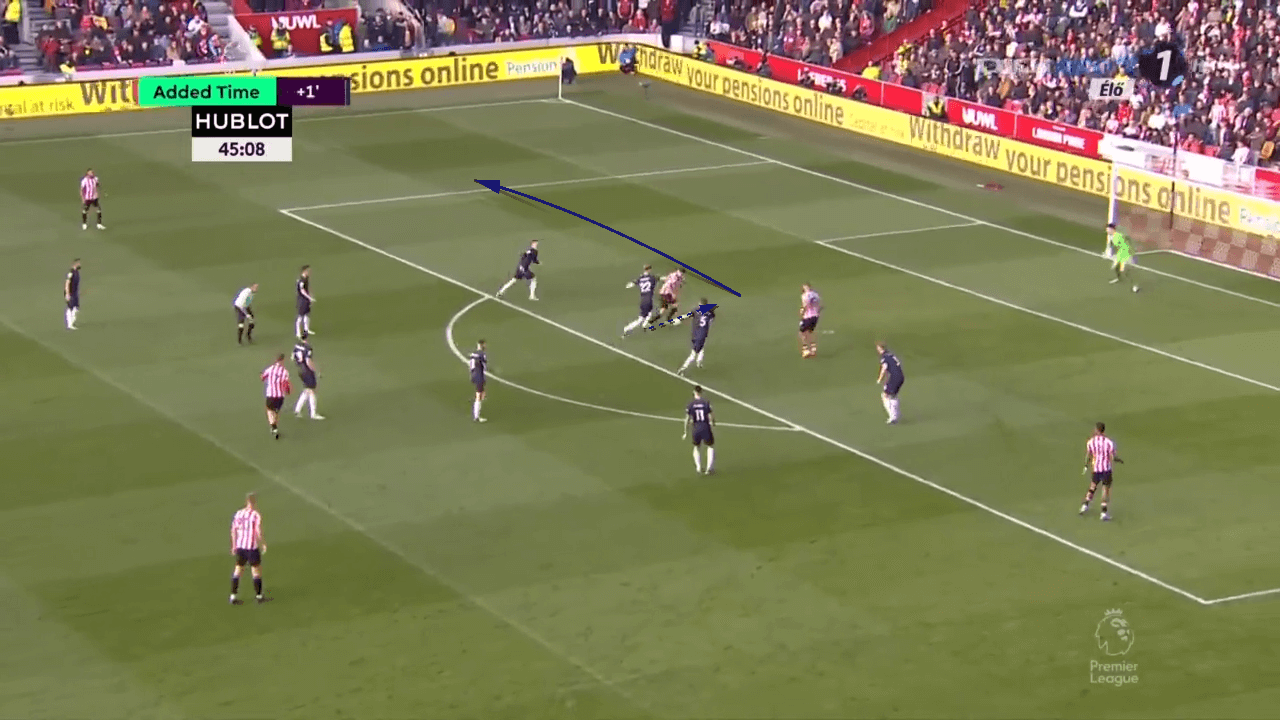
Physical Prowess
Standing at 6 foot 3 means Collins is one of the taller players in the Premier League. His height, combined with the power in his body allows him to thrive in aerial situations in both boxes, although his offensive heading ability is not amazing. Collins has regularly displayed his aerial dominance where he can easily win aerial duels by towering over his opponents, whilst also possessing the power to unbalance his opponents before they attempt to win the header.
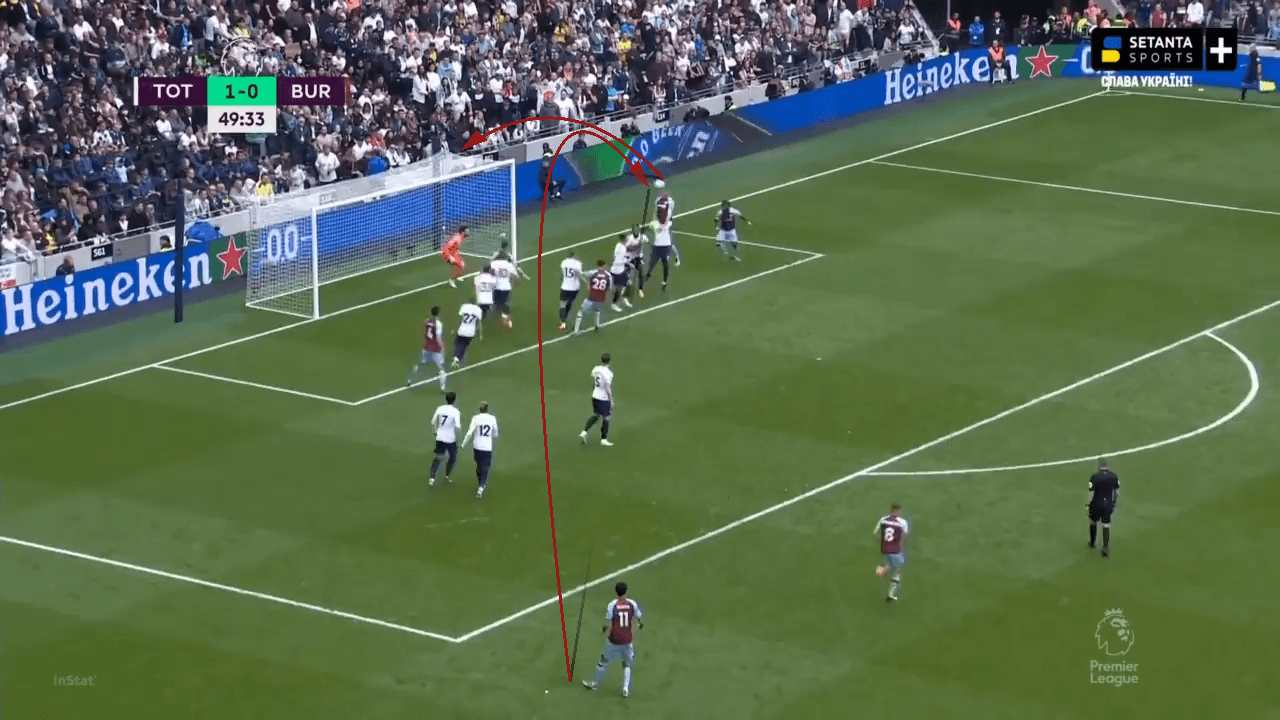
Ball-playing Defender
Although he played for a team which preferred to play direct counter-attacking football, Collins regularly displayed his on-the-ball abilities even though his team wasn’t set up in the right way for him to showcase his skills. Collins is a very confident and comfortable player on the ball, the image below shows how he always wants to keep the ball and pass it around even though most of the players have already gone up the pitch, waiting for a long ball.
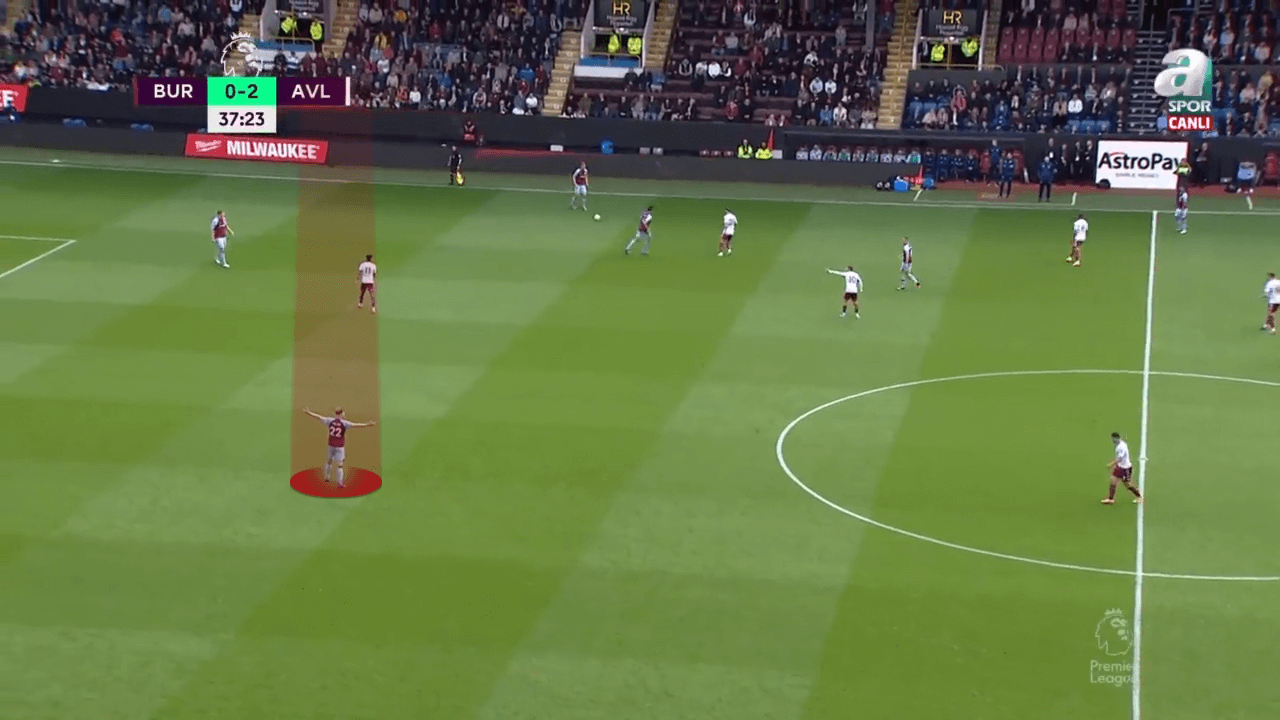
A key skill that makes Collins an impressive ball-playing defender is his ability to pass the ball accurately. Collins has an impressive passing range, with the ability to switch play to either winger, whilst also being able to play strong passes on the floor. The image below shows Collins’ willingness to progress play by passing the ball on the floor, even though there is the risk of the pass being intercepted and Wolves having a counter-attacking opportunity.
The confidence of Collins to play the pass with the risk attached, and still complete it successfully shows just how good and comfortable Collins is on the ball. The Burnley player receiving the ball isn’t even expecting the pass to arrive, due to the difficulty of the pass combined with the different tactics that Burnley have set up. Collins has shown his ability to improvise and progress play when he isn’t even expected to do so.
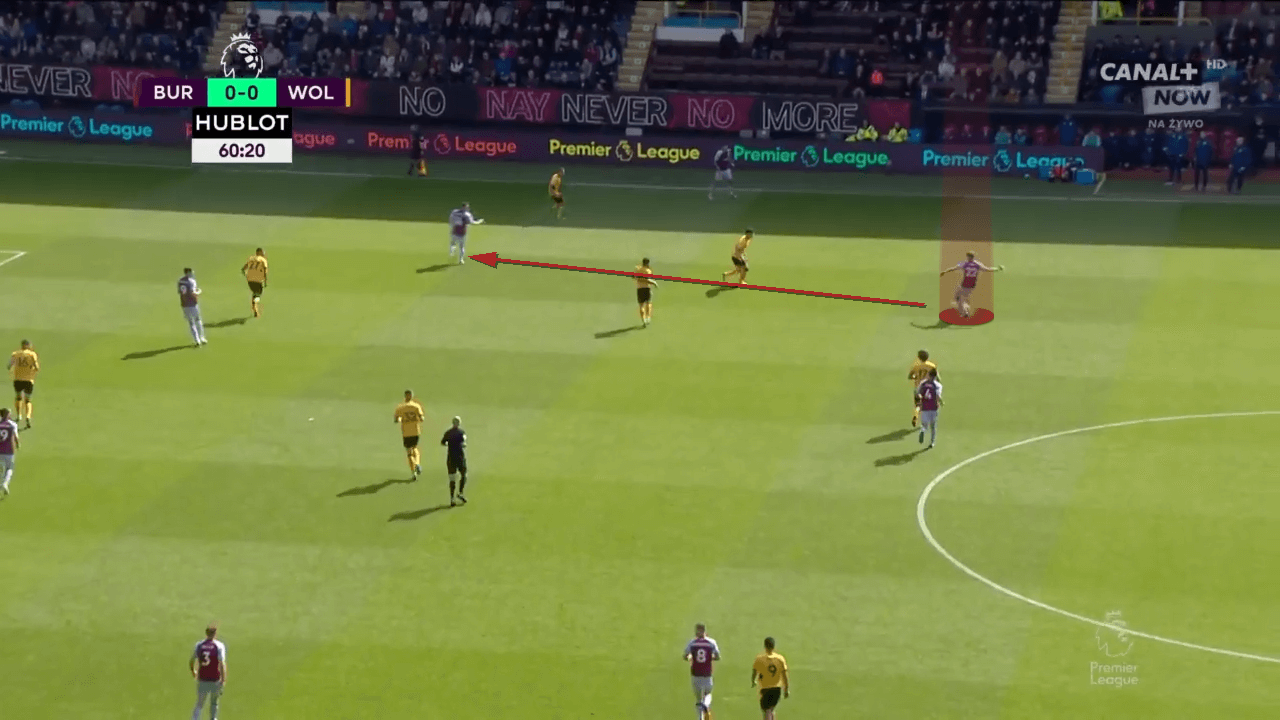
Arguably Collins’ biggest strength, is his ability to drive with the ball, progressing play through his dribbling ability. Collins has the confidence and the ability which allows him to go on these 3o-yard runs up the pitch in most games. Collins is able to effectively turn with the ball on either side and take big strides to beat his opponents with the ball. Nathan Collins attempts these kinds of dribbles almost every game and joining a Wolves side that attempts to build play from the back, and a side that plays with a back three will allow him to consistently go on these runs with adequate cover behind him.
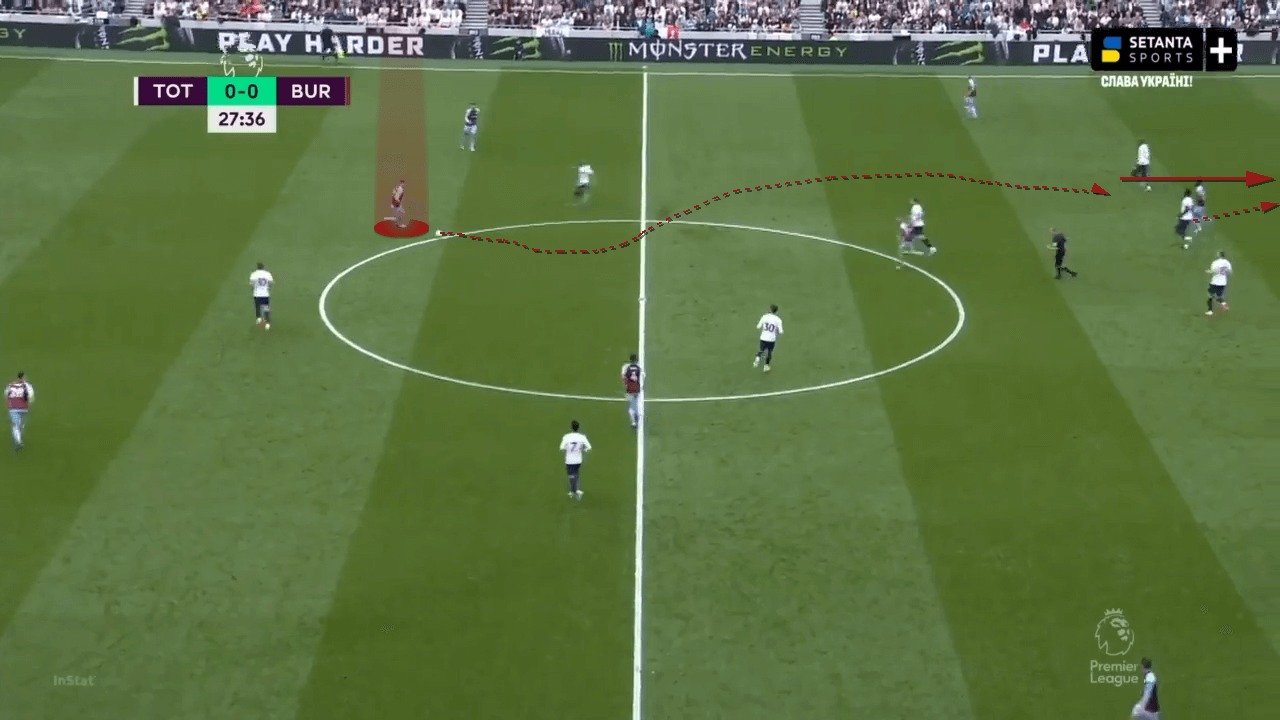
Weaknesses
Nathan Collins isn’t the complete package, which should be expected from a 21-year-old who has only just completed his first season of Premier League football. One area where Collins has struggled is his decision-making. At times, Collins has held onto the ball for too long, attracting pressure without the option to release the ball. This has caused him to lose the ball in dangerous areas, gifting opposing teams clear counter-attacking opportunities.
This could also partly be down to the players and team’s differing play styles. Collins attempts to pass the ball out the back, whilst the Burnley players are instructed to go long and direct rather than offering options to progress the ball through. This is an area which should definitely improve as long as Collins receives regular game time to become more familiar with these kinds of situations.
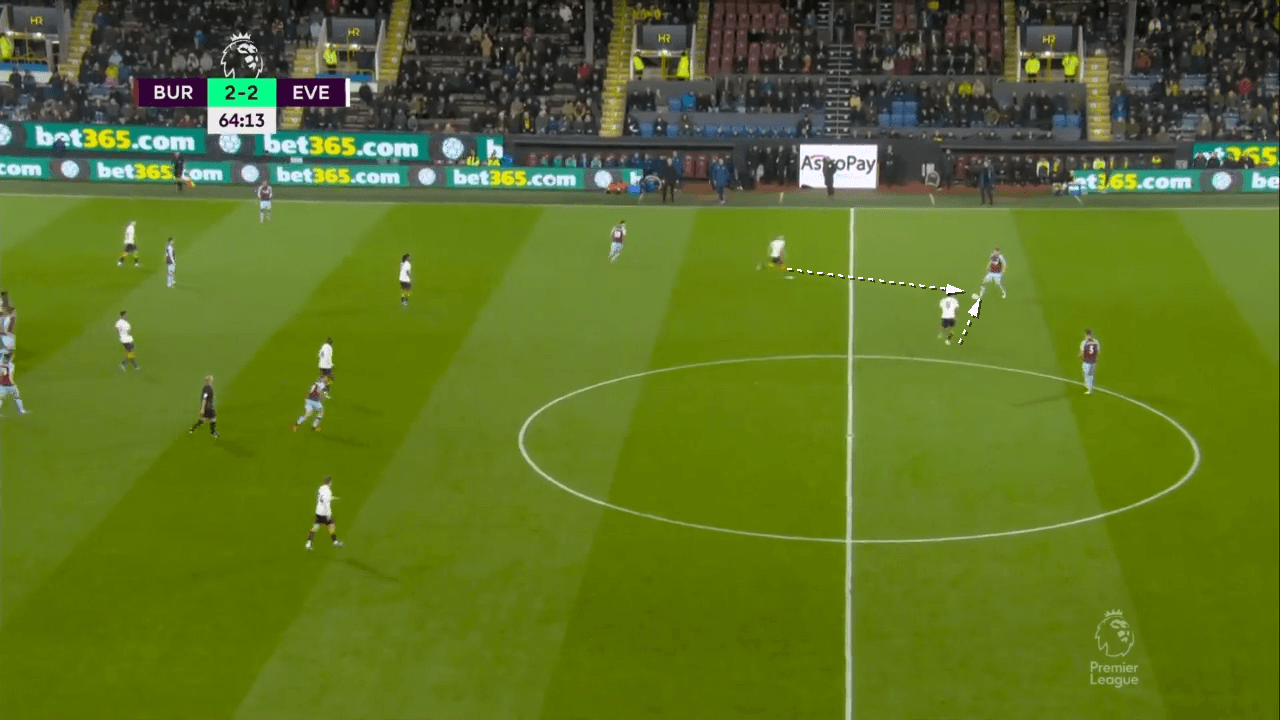
Another area where Collins struggles, and this could limit him from playing at a higher level, is his inability to defend on the front foot. Collins is quite a heavy player because of his physical features, which massively impacts his speed and agility. This causes him to struggle in wider areas where he is left 1v1 against agile attacking players.
Collins can be slow to turn, so when he is left alone, it is hard for him to be able to turn quickly enough to deal with the opponent’s change of direction or speed. As a result, Collins can sometimes lack the aggression to defend in high areas, where he is slow to reach the attackers and he can’t get to them before they receive the ball. The ability to defend on the front foot is key to counter-pressing, which is something every top club looks to do.
If Collins fails to improve his anticipation to jump out to attackers in higher areas, he will be forced to only play in teams which defend deep. He will continually get caught out during counter-attacks and become a liability for his team.
The image below shows how he is too slow to reach the attacker before they reach the ball, which allows the attacker to turn and dribble past Collins by the time he tries to put a foot in. Fortunately for Collins, Wolves will attempt to sit in a mid-block, which will prevent the number of times Collins is found in these situations, preventing him from being exposed by opposition forwards.
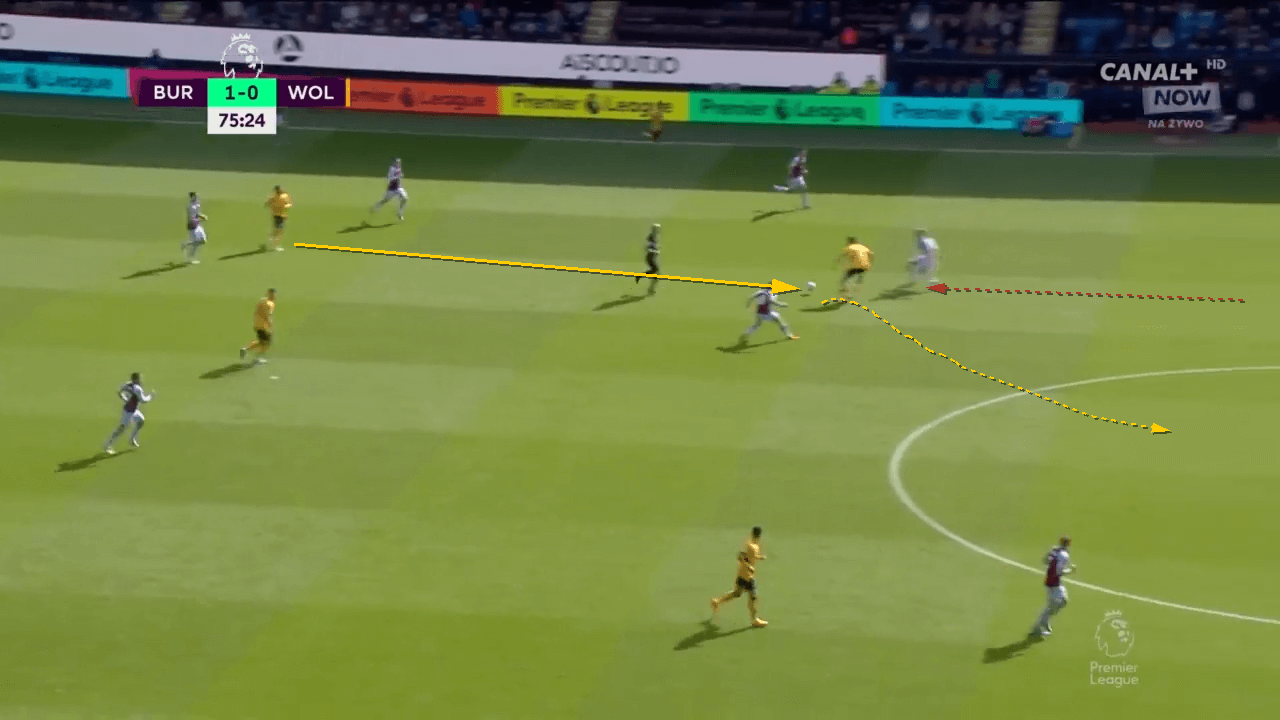
Conclusion
This scout report clearly shows the similarities Collins possesses to Maguire, and how these strengths help Collins thrive in low blocks. Due to Wolves’ play style of defending deeper, and building play out from deep in a back three shape, these tactics will help Collins thrive in his new club.
Collins will be able to showcase his ability to lead a back line and defend in a compact unit, whilst also showing his quality on the ball to progress play from the 1st to 2nd phase. Another common theme to look out for is Collins carrying the ball from the defensive line, past the opposition press and laying it off to more creative players in the final third.
Collins has some areas of his game where he does struggle, but being on this Wolves side will help mask those weaknesses, and he will have the opportunity to work on those areas of his game, and the ability to develop under a good manager like Bruno Lage.






Comments